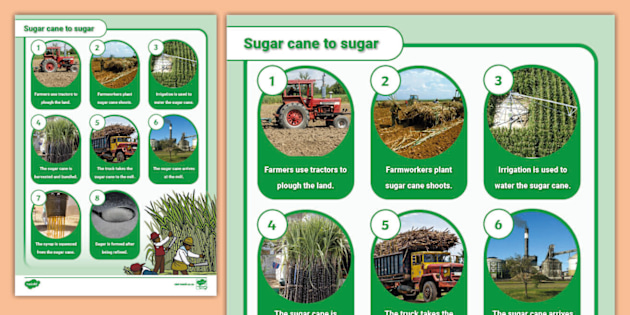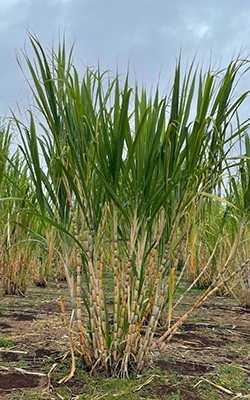Understanding Just How Sugar Canes Work: What Are Sugar Canes Made Use Of For in Food and Beyond?
Sugar canes are integral to numerous elements of both cooking and industrial practices. Their adaptability enables them to be changed into sugar, drinks, and even biofuels. As one discovers the journey from farming to processing, the diverse applications of sugar walking canes disclose a complex interaction between farming and sector. The effects of sugar walking cane manufacturing extend beyond simple energy, elevating questions regarding ecological sustainability and financial influence.

The History and Beginning of Sugar Canes
Frequently taken for granted in modern diets, the background and origin of sugar walking canes disclose an intricate trip that covers thousands of years. Belonging To Southeast Asia, sugar walking stick was initial cultivated around 8000 BCE, with its sweet juice coming to be extremely valued by early people. By the initial millennium AD, it infected India, where it was improved into taken shape sugar, a noteworthy technology that changed its usage and profession. The introduction of sugar cane to the Mediterranean took place around the 7th century, thanks to Arab traders, who recognized its economic potential.During the Age of Exploration, European homesteaders developed sugar ranches in the Caribbean, substantially influencing international trade. By the 17th century, sugar came to be an essential commodity, fueling economic situations and influencing social frameworks. The tale of sugar canes is linked with agriculture, commerce, and cultural exchanges, noting its relevance in shaping contemporary financial systems and cooking practices.

Cultivation and Gathering Practices
The growing and harvesting of sugar canes involve a number of critical methods that identify the high quality and yield of the plant - What Are Sugar Canes Used For. Key aspects consist of effective soil prep work techniques, exact growing approaches, and reliable harvesting approaches. Comprehending these techniques is crucial for optimizing manufacturing and making sure sustainability in sugar walking cane farming
Soil Preparation Techniques
Effective dirt prep work techniques are necessary for successful sugar cane cultivation, as they lay the structure for healthy growth and ideal yield. The procedure starts with soil screening to examine nutrient levels and pH balance, permitting customized modifications. Tilling and plowing are after that used to aerate the dirt and break up compaction, boosting origin penetration. Including organic matter, such as compost or well-rotted manure, improves dirt fertility and structure. Additionally, appropriate water drainage systems are vital to stop waterlogging, which can impede cane growth. Cover cropping may likewise be utilized to reduce weeds and boost soil wellness. These practices collectively guarantee that sugar walking stick has the most effective atmosphere to flourish, bring about robust plant health and wellness and enhanced performance.
Planting and Growth
Successful growing and development practices are important for maximizing the yield of sugar cane. The process starts with selecting healthy seed walking canes, which are sectors of fully grown stalks abundant in buds. These seed canes are commonly grown in well-prepared soil, preferably at a deepness of 4 to 6 inches, guaranteeing adequate moisture and aeration. Sugar walking cane flourishes in cozy environments with ample sunshine and needs constant irrigation, especially throughout dry spells. Fertilization with phosphorus, potassium, and nitrogen is important to advertise durable development. Weed control is also vital, as competition can hinder development. Normal tracking of plant health and dirt problems allows for prompt interventions, ultimately bring about an effective crop that satisfies market demands.
Harvesting Approaches
Gathering sugar walking stick needs mindful planning and implementation to ensure maximum yield and top quality. Typically, the harvest happens when the walking stick gets to perfect sugar material, frequently between 12 to 18 months after planting. There are two key methods: handbook and mechanical harvesting. Manual harvesting entails laborers using machetes to cut the stalks at ground degree, making certain very little damage to the plant and soil. In contrast, mechanical harvesting employs customized equipments that cut, chop, and deliver the walking cane, boosting performance and lowering labor prices. Nonetheless, mechanical methods can bring about higher dirt compaction and loss of nutrients. Despite the approach, prompt harvesting is necessary, as delays can cause decreased sugar top quality and enhanced vulnerability to diseases and insects.
Processing Methods for Sugar Removal
The processing of sugar walking stick is a vital phase in sugar manufacturing, incorporating a number of key techniques - What Are Sugar Canes Used For. Initially, gathered walking stick undertakes juicing and crushing to extract its sweet liquid. This juice then continues via filtration and crystallization, changing it right into the sugar most frequently utilized today
Collecting Sugar Walking Cane
Sugar cane collecting marks a critical stage in the production procedure, where timing and technique play important functions in taking full advantage of return. Generally, the harvest takes place when sugar material goes to its height, which varies based on environment and growth problems. Workers utilize specialized tools or guidebook devices to cut the walking cane at the base, making certain minimal damage to the plant. Proper method is vital; reducing too expensive can decrease the quality and amount of the sugar removed later on. After reducing, the cane should be moved immediately to processing centers to stop wasting and sugar destruction. The effectiveness of the harvesting procedure considerably affects the total performance and profitability of sugar cane farming, making it a crucial emphasis for producers.
Squashing and Juicing
When sugar walking stick is gathered, the following essential action involves juicing and squashing page to draw out the wonderful fluid which contains sucrose. This procedure typically employs heavy equipment created to crush the stalks, damaging down the coarse structure and launching the juice. Rollers or mills apply substantial pressure, permitting the walking cane juice to flow out while separating the coarse deposit, referred to as bagasse. When smashed, the cane is frequently subjected to a collection of pressing phases to take full advantage of juice removal. The gathered juice is rich in sugar and may include contaminations, which will certainly be attended to in later processing steps. On the whole, juicing and crushing are important strategies that change harvested sugar cane right into a liquid kind appropriate for additional refinement.
Purification and Condensation
Purification and formation are pivotal procedures in transforming raw cane juice right into polished sugar. After drawing out juice from smashed sugar walking canes, the fluid includes contaminations such as plant fibers, minerals, and proteins. To attain purification, the juice undergoes explanation, where heat and lime are included in precipitate impurities, which are after that removed. The made clear juice is after that concentrated via dissipation to form a thick syrup.Next, formation happens, where sugar crystals form as the syrup cools down. This process normally involves seeding the syrup with existing sugar crystals to promote uniform development. The resulting crystals are divided from the remaining molasses via centrifugation, generating pure sugar. This polished item is after that dried and packaged for various culinary usages.
Culinary Use Sugar Canes
While frequently linked largely with sugar, sugar walking sticks use a flexible array of cooking applications beyond their role in sugar manufacturing. Fresh sugar walking cane can be juiced, generating a wonderful, stimulating drink enjoyed in many exotic regions. This juice functions as a base for healthy smoothies and alcoholic drinks, including a special flavor profile.Additionally, sugar walking stick syrup, stemmed from condensing the juice, is used as an all-natural sweetener in various recipes, from marinades to treats. The syrup gives a rich, caramel-like taste, improving both savory and sweet recipes.In some cuisines, sugar walking cane stalks are grilled or baked, offering a distinct great smoky preference that matches veggies and meats. Sugar walking stick can be included into treats, such as candies and puddings, where its sweet taste and fibrous structure develop delightful contrasts. Generally, sugar canes add to both traditional and ingenious cooking productions across diverse societies.
Industrial Applications Beyond Food
Past their culinary uses, sugar canes play a considerable function in various industrial applications, adding to industries such as bioenergy, paper manufacturing, and bioplastics. The fibrous material of sugar walking stick is used in the production of biofuels, especially ethanol, which functions as my review here a renewable energy source that reduces dependancy on fossil gas. In the paper sector, bagasse, the coarse residue left after juice removal, is refined into pulp for paper and cardboard manufacturing, promoting sustainable techniques by making use of waste. Additionally, improvements in bioplastic innovation have led to the development of biodegradable plastics stemmed from sugar cane, providing an environment-friendly option to conventional petroleum-based plastics. These industrial applications not just improve the worth of sugar walking sticks but likewise straighten with worldwide activities towards sustainability and eco-friendly sources, illustrating their adaptability beyond the kitchen area.

The Environmental Effect of Sugar Cane Manufacturing
The production of sugar walking stick, in spite of its countless industrial benefits, positions significant environmental challenges. Logging is usually an effect, as large locations of land are removed to grow sugar walking stick, bring about habitat loss and biodiversity decline. In addition, the extensive farming practices connected with sugar walking cane cultivation can lead to dirt destruction and erosion. The hefty use plant foods and pesticides to make the most of returns adds to water air pollution, negatively affecting water ecosystems.Moreover, sugar cane production is linked to raised greenhouse gas emissions, particularly via land-use modifications and the burning of cane fields before harvest. These practices not just influence air quality but likewise additional resources add significantly to environment modification. Additionally, the water-intensive nature of sugar cane farming locations stress and anxiety on local water resources, influencing ecological communities and communities reliant on these supplies. Resolving these environmental impacts is vital for lasting sugar cane production in the future.
Frequently Asked Concerns
Exist Wellness Conveniences Associated With Consuming Sugar Cane?
The question of health and wellness benefits connected to sugar cane intake highlights prospective advantages. Sugar cane might supply hydration, essential minerals, and anti-oxidants, yet small amounts is important due to its natural sugar material and possible health effects.
Exactly How Does Sugar Cane Compare to Other Sugar Nutritionally?

Sugar cane supplies all-natural sweet taste, mainly comprising sucrose, while various other sweeteners vary in make-up and caloric content. Contrasted to man-made options, sugar cane gives nutrients, though it stays high in calories and carbohydrates.
Can Sugar Walking Cane Be Grown in Non-Tropical Areas?
Sugar cane largely prospers in exotic climates, needing plentiful rainfall and cozy temperature levels. While some non-tropical areas attempt growing, success is limited because of poor heat and expanding seasons, making large production challenging.
What Are the Common Bugs or Illness Affecting Sugar Canes?
Common insects impacting sugar walking sticks consist of the sugarcane borer and aphids, while diseases like leaf scald and red rot posture considerable hazards. Effective management methods are vital for preserving healthy and balanced sugar walking stick plants and maximizing yields.
Just How Does Sugar Cane Impact Resident Economies?
The influence of sugar walking cane on neighborhood economies is substantial, providing work opportunities, boosting agricultural sectors, and contributing to exports. Its farming boosts and sustains neighborhood businesses area development through enhanced earnings and framework renovations. Indigenous to Southeast Asia, sugar walking cane was very first cultivated around 8000 BCE, with its wonderful juice becoming highly valued by very early human beings. The intro of sugar walking stick to the Mediterranean occurred around the 7th century, many thanks to Arab traders, who recognized its economic potential.During the Age of Expedition, European homesteaders developed sugar haciendas in the Caribbean, considerably influencing global trade. The processing of sugar walking stick is a vital stage in sugar manufacturing, including a number of essential techniques. While frequently linked primarily with sugar, sugar walking sticks offer a functional variety of cooking applications past their role in sugar production. The hefty use of plant foods and pesticides to take full advantage of yields contributes to water air pollution, negatively impacting aquatic ecosystems.Moreover, sugar walking cane production is linked to raised greenhouse gas discharges, especially with land-use modifications and the burning of cane fields prior to harvest.